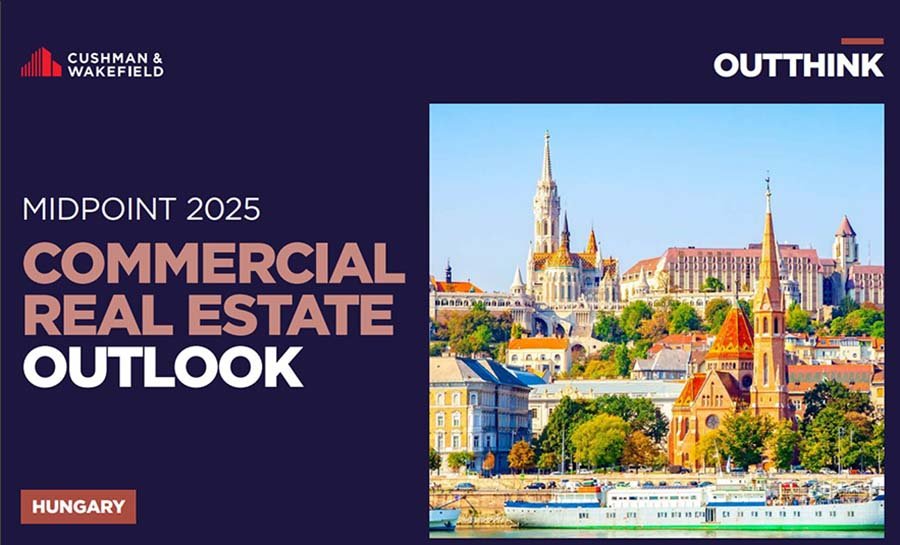читайте также
 Ten Years to a Passport: New Citizenship Rules in Portugal
Ten Years to a Passport: New Citizenship Rules in Portugal
 Top 25 World Economies 2025: Who Shapes Global Growth
Top 25 World Economies 2025: Who Shapes Global Growth
 “Season of Strict Rules”: How Cities Around the World Are Tightening Short-Term Rental Laws — And What It Means for Guests, Hosts, and Investors
“Season of Strict Rules”: How Cities Around the World Are Tightening Short-Term Rental Laws — And What It Means for Guests, Hosts, and Investors
 Turkey to Double the Tax Burden on Landlords
Turkey to Double the Tax Burden on Landlords
 Europe Calls — and Pickpockets Answer: Where Tourists Face the Greatest Risks in 2025 and How Not to Become a Victim
Europe Calls — and Pickpockets Answer: Where Tourists Face the Greatest Risks in 2025 and How Not to Become a Victim
 Thailand to Deport Russians and Crack Down on Visa Runners
Thailand to Deport Russians and Crack Down on Visa Runners
Вusiness / Real Estate / Investments / Analytics / Research / Hungary / Real Estate Hungary 08.10.2025
Hungary’s Commercial Real Estate: Rising Investment, Flat Yields

In the first half of 2025, investment volumes in Hungary’s real estate market increased while prime yields across the main sectors stopped rising, according to a Cushman & Wakefield report. Office vacancies fell amid minimal new construction. In industrial & logistics, total stock expanded but the share of vacant space grew. Retail remained weak. Hotels improved on the back of tourism, yet occupancy stayed below pre-pandemic levels.
Investment into Hungarian real estate exceeded €280 million in H1 2025, up 55% year on year. Growth was driven by three large deals, while most transactions were below €25 million. Offices captured the largest share of capital (49%). Industrial held up thanks to the sale of the HelloParks portfolio, whereas retail assets saw lower activity.
Offices: Minimal Deliveries, Falling Vacancy
Budapest’s office market saw very limited new supply in H1 2025: only 5,060 sq m were delivered, 94% less than a year earlier. The under-construction pipeline totaled 306,000 sq m, 88% of which was build-to-suit.
The vacancy rate declined to 12.8%, 1.2 pp lower year on year, reflecting robust end-user demand. Speculative development slowed, and developers focused on refurbishments and repositionings in central submarkets.
Net take-up accounted for 47% of total demand. Owner-occupier purchases rose to 11%. No new pre-leases were signed, and analysts expect this situation to persist near term.

Prime CBD rents remained stable at €25/sq m/month. Rents increased in South & Central Buda and along the Váci Corridor. Further uplifts are likely for offices meeting ESG and green-building standards.
Long-term trends show that, after the 2020–2021 supply peaks, construction volumes fell to multi-year lows by 2025. Vacancy had risen for several years, peaked in 2023–2024, and has since started to recede.
Industrial: Stock Expansion and Higher Vacancy
Hungary’s warehouse & logistics stock grew by 192,000 sq m to 5.8 million sq m. New deliveries jumped 172% year on year to 191,600 sq m. Vacancy rose to 12.5%, up 4 pp from 2024. Greater Budapest reached 13.4%; the regions stood at 10.8%. Analysts link this to a wave of secondary space returning to the market in H1, with the peak in Q2; further vacancy increases are not expected.

Leasing demand remained strong at 439,800 sq m (+35% YoY). Pre-leases made up 20%; renewals accounted for 36%. The pipeline under construction reached 506,000 sq m, with 47% already pre-committed.
In Greater Budapest, headline rents decreased 5.2% to €5.50/sq m/month. The national average held at €5.70 (–1.7% YoY). Regional rents were broadly unchanged. Expanded incentive packages widened the gap between modern and legacy assets. Hungary also strengthened its EV and battery manufacturing base, supporting demand for contemporary warehouse space and sustaining developer interest.
Retail: Soft Momentum, High-Street Rent Growth
Total retail stock reached 3.1 million sq m, up 4% versus H1 2024. Retail sales rose 3% YoY in January–May and are expected to hold this pace in H2 2025.
New development was slow, but ~55,000 sq m are slated for H2, including Zenit Corso (Budapest) and 12 retail parks. Most activity centered on extensions and refurbishments. The revamped Time Out Market added footfall to Budapest’s core.

Inflation fell to 4.4% but remained above target, tempering consumption. E-commerce held 8.1% share with little change. Leasing diverged by format: high-street prime rents rose 7.7% YoY to €140/sq m/month, signaling renewed demand in key pitches; shopping centers were stable; retail parks have seen gradual rent growth in recent years, expected to continue.
Hotels: RevPAR Up, Occupancy Still Below 2019
Budapest hotels continued to recover in H1 2025. RevPAR rose 8.2% YoY on higher occupancy and stood 23.3% above 2019. ADR increased 1.8% to €116. Occupancy reached 68% (+6.2 pp YoY) but remained below the 74% pre-COVID level.

H1 saw 238 new rooms (+0.7%), with openings at Kimpton BEM, Radisson Collection Basilica, and Tribe Budapest Airport. Midscale now represents 38%+ of city inventory. Supply should grow only ~1.3% by year-end, keeping expansion constrained. Paid accommodation demand in 2025 is expected to exceed 2024 by 14.5%, supported by +15.5% international tourism and a broader air-route network.
Yields & Risks: Stabilized Returns, Limited Upside
By mid-2025, prime yields across Hungary’s core CRE sectors were broadly unchanged from 2024: offices 6.25%, industrial & high street 6.75%, hotels 7.25%. Industrial/logistics saw a –25 bps move earlier but is now steady.

This reflects stabilization after prior yield expansion. For investors, volatility risk has eased and pricing is more predictable than in 2022–2023. However, upside is capped: yields have plateaued, and the market offers no new risk premium.
Sector risks persist. In industrial, added supply pushed vacancy higher and may pressure rents. Offices face limited new construction—reducing tenant choice but preventing oversupply. Retail demand is muted amid inflation headwinds. Hotels are improving with tourism, yet remain exposed to air connectivity and geopolitics.
Long-run data show that after the €1.5bn peak in 2019 and steady €1.1–1.2bn in 2020–2022, investment volumes fell sharply to €600m in 2023 and €400m in 2024. The €300m H1 2025 result signals partial recovery, but levels remain below pre-crisis benchmarks.

Подсказки: Hungary, commercial real estate, CRE, Budapest, offices, industrial, logistics, retail, high street, hotels, yields, investment, vacancy, rents, RevPAR, ESG, EV, battery, tourism





